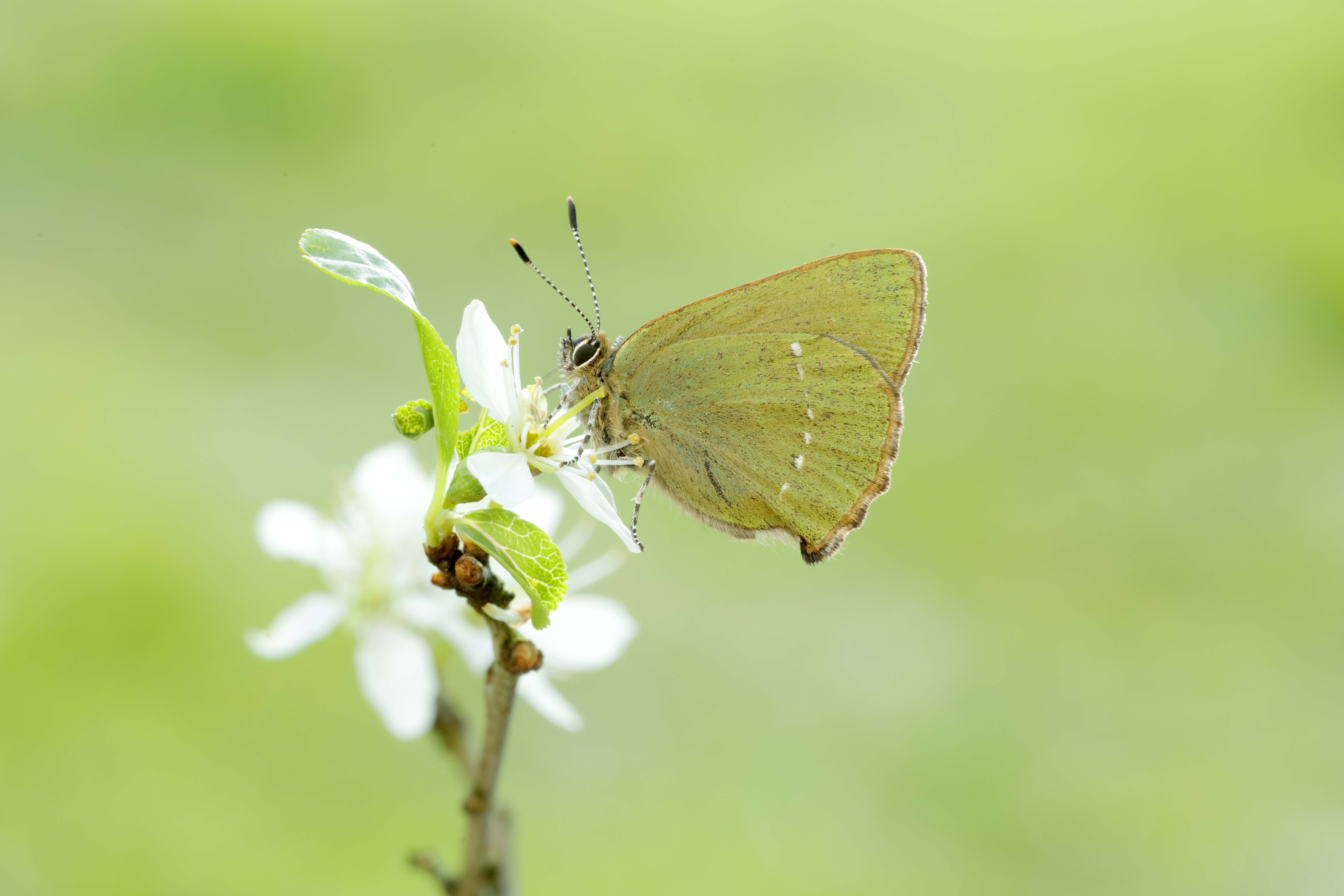Climate change presents both risks and opportunities for UK wildlife, with often more predicted winners than losers, especially amongst insects1. Species most at risk are those adapted to cooler, damper conditions, and they often occur in northern, western and upland habitats in Britain. There is already much evidence of the northwards and upslope range retractions of butterflies2 and moths3 here and elsewhere in the world4,5.
However, while most assessments of climate change impacts on biodiversity have been carried out at large geographic scales, the climatic conditions experienced by a butterfly or moth, its immature stages and its hostplants, vary at the scale of centimetres and metres, as well as kilometres. Different slopes and aspects of the landscape, patches of bare ground and variations in the height of vegetation all contribute to the complex microclimates inhabited by individual insects.
It is possible, therefore, that while the average climatic conditions of a landscape may become unsuitable for a particular species, small-scale climate refuges may enable it to persist, for example by shifting from the south-facing to the north-facing side of a mountain. Failing to account for such refuges (termed ‘refugia’ by scientists) may lead researchers to over-estimate the negative impacts of future climate change on biodiversity.
Research has already shown that populations of some butterfly species are more stable (and therefore less at risk of extinction) in landscapes with greater variety of physical structure (topography) such as hills and valleys6. Now, a new study led by Exeter University and funded by Natural England, has specifically demonstrated the role of microclimate and quantified the benefits that this brings to climate-threatened plants and insects in England7.
The assessment, published in the journal Nature Climate Change, considered 430 species that had previously been identified as declining in England and vulnerable to future climate change1. These included 91 species of butterflies and moths, using data from Butterfly Conservation’s recording schemes (Butterflies for the New Millennium and National Moth Recording Scheme). For some species already being negatively affected by climate change, fine-scale variation in microclimate was found to reduce the risk of local extinction, particularly in areas where warming has been greatest. Many of these climatically-sensitive species were plants, but a few Lepidoptera also appear to be benefitting from such microclimatic buffering, surviving substantially better in the most rapidly warming parts of England as a result of diverse microclimates. This buffering effect reduced the local extinction risk in landscapes with the highest levels of warming by over 60% for the Dark Green Fritillary butterfly and Lunar Thorn, Wood Tiger and Gold Spangle moths, over 50% for the Small Purple-barred moth and by 25% for the Green Hairstreak butterfly.
While climate change still poses a serious risk to many species in the UK, the existence of microclimatic refugia provides a glimmer of hope, particularly for species with low mobility, that they may be able to persist for much longer than previously expected in their current landscapes. Protecting such areas, managing their habitats and, potentially, enhancing topographical variation as part of major construction projects could play an important part in climate change adaptation in future decades.
Richard Fox
Associate Director Recording and Research
References
1. Pearce-Higgins, J.W., Beale, C.M., Oliver, T.H., August, T.A., Carroll, M., Massimino, D., Ockendon, N., Savage, J., Wheatley, C.J., Ausden, M.A., Bradbury, R.B., Duffield, S.J., Macgregor, N.A., McClean, C.J., Morecroft, M.D., Thomas, C.D., Watts, O., Beckmann, B.C., Fox, R., Roy, H.E., Sutton, P.G., Walker, K.J. & Crick, H.Q.P. (2017) A national-scale assessment of climate change impacts on species: assessing the balance of risks and opportunities for multiple taxa. Biological Conservation 213: 124–134. doi:10.1016/j.biocon.2017.06.035
2. Franco, A.M.A., Hill, J.K., Kitschke, C., Collingham, Y.C., Roy, D.B., Fox, R., Huntley, B. & Thomas, C.D. (2006) Impacts of climate warming and habitat loss on extinctions at species’ low-latitude range boundaries. Global Change Biology 12: 1545–1553. doi:10.1111/j.1365-2486.2006.01180.x
3. Fox, R., Oliver, T.H., Harrower, C., Parsons, M.S., Thomas, C.D. & Roy, D.B. (2014) Long-term changes to the frequency of occurrence of British moths are consistent with opposing and synergistic effects of climate and land-use changes. Journal of Applied Ecology 51: 949–957. doi:10.1111/1365-2664.12256
4. Wilson, R.J., Gutiérrez, D., Gutiérrez, J. & Monserrat, V.J. (2007) An elevational shift in butterfly species richness and composition accompanying recent climate change. Global Change Biology 13: 1873–1887. doi:10.1111/j.1365-2486.2007.01418.x
5. Chen, I-C., Hill, J.K., Shiu, H-J., Holloway, J.D., Benedick, S., Chey, V.K., Barlow, H.S. & Thomas, C.D. (2011) Asymmetric boundary shifts of tropical montane Lepidoptera over four decades of climate warming. Global Ecology and Biogeography 20: 34–45. doi:10.1111/j.1466-8238.2010.00594.x
6. Oliver, T., Roy, D.B., Hill, J.K., Brereton, T. & Thomas, C.D. (2010) Heterogeneous landscapes promote population stability. Ecology Letters 13: 473–484. doi:10.1111/j.1461-0248.2010.01441.x
7. Suggitt, A.J., Wilson, R.J., Isaac, N.J.B., Beale, C.M., Auffret, A.G., August, T., Bennie, J.J., Crick, H.Q.P., Duffield, S., Fox, R., Hopkins, J.J., Macgregor, N.A., Morecroft, M.D., Walker, K.J. & Maclean, I.M.D. (2018) Extinction risk from climate change is reduced by microclimatic buffering. Nature Climate Change doi:10.1038/s41558-018-0231-9


